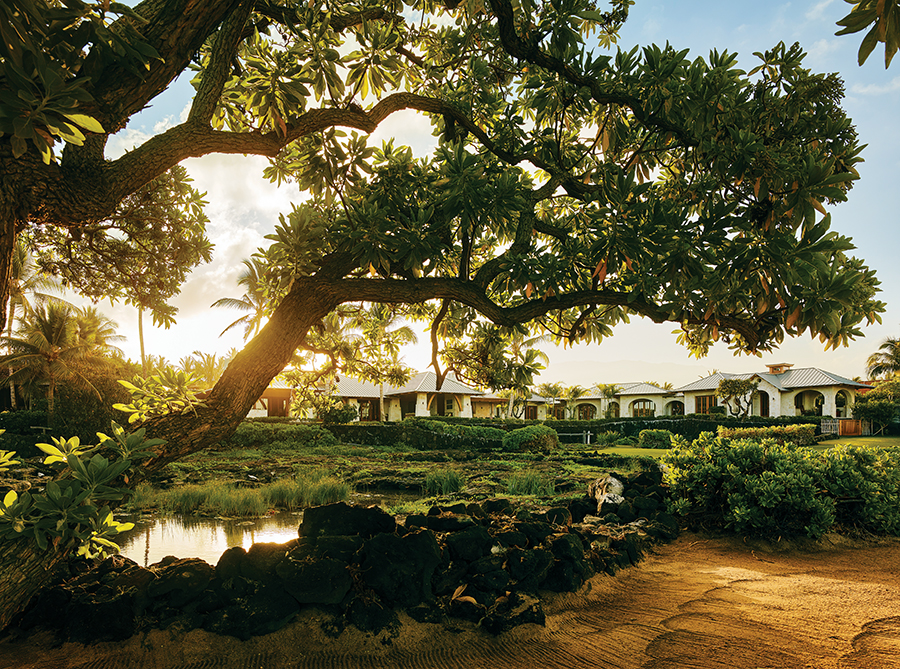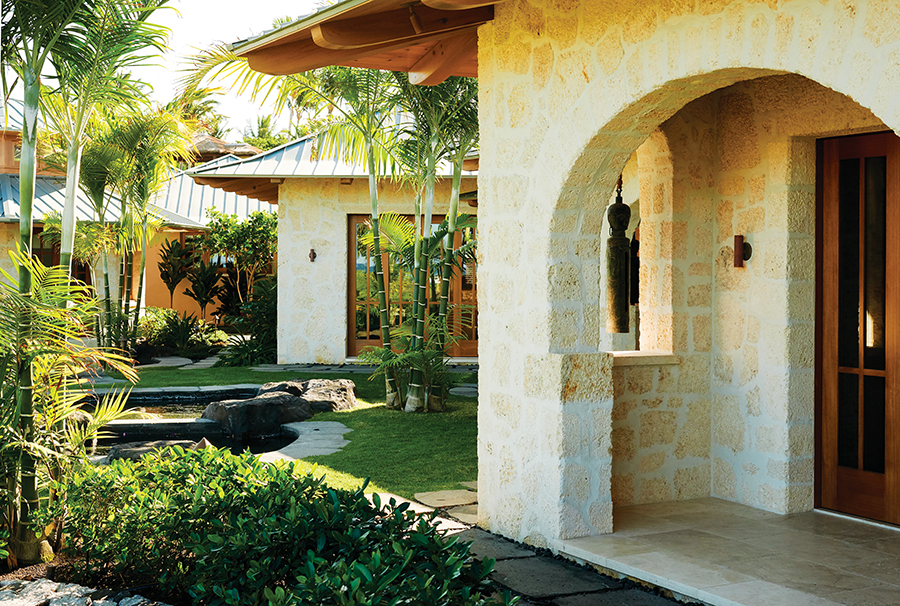

The century-old Arts and Crafts architecture of Greene and Greene has been resurrected.
But not in its birthplace of Pasadena. Its newest iteration is on the leeward side of the Big Island in Hawaii—in a home called the Wai’olu Residence, at the Kukio Golf and Beach Club.
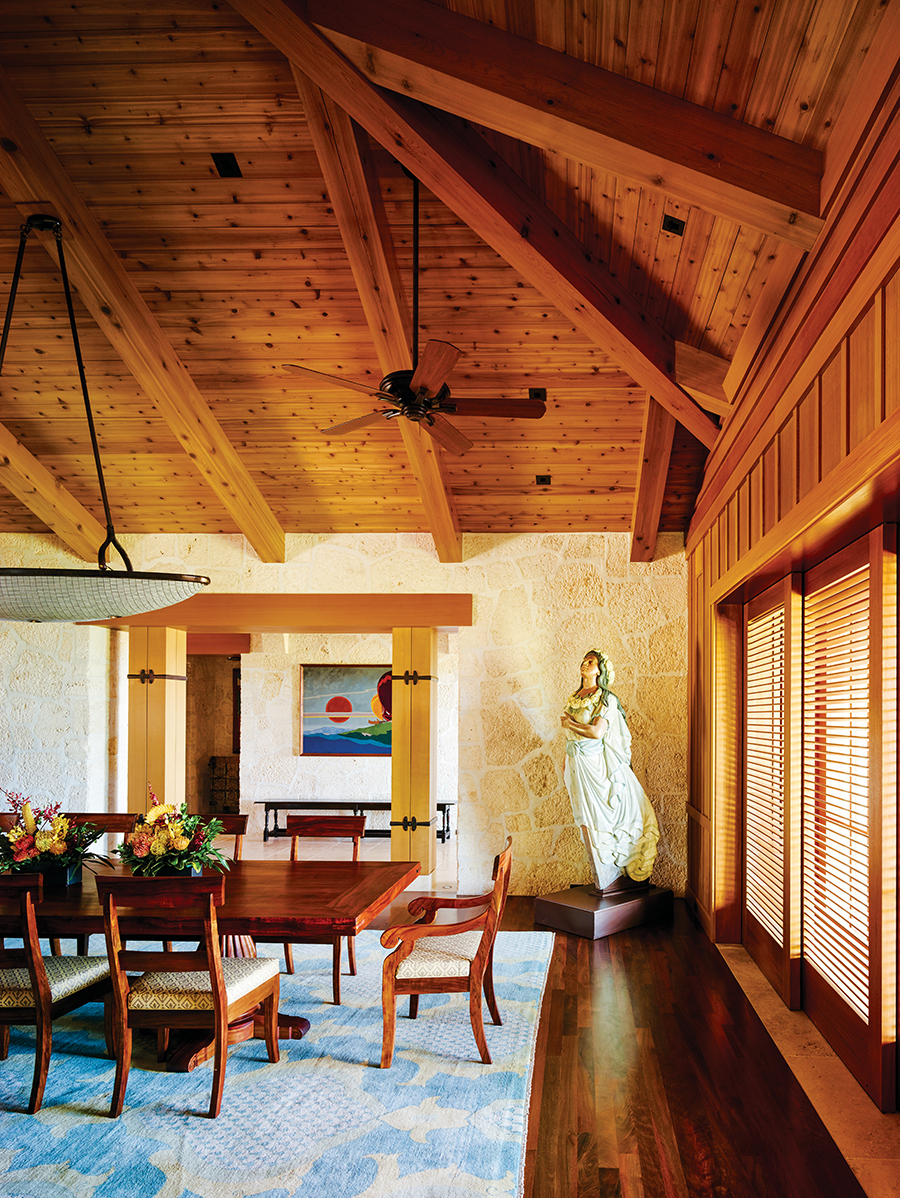

It’s an 11,700-square-foot structure filled with natural light and fresh air, just like its forerunners from the early 20th century. Designed by Mark de Reus, this single-story home rambles, bungalow-like, along a dogleg-shaped site.
Its vistas—of the ocean, the island of Maui and the ancient Anchialine Ponds—drove its design. “We captured the views from all five bedrooms, and baths with outdoor showers and tubs,” de Reus says.
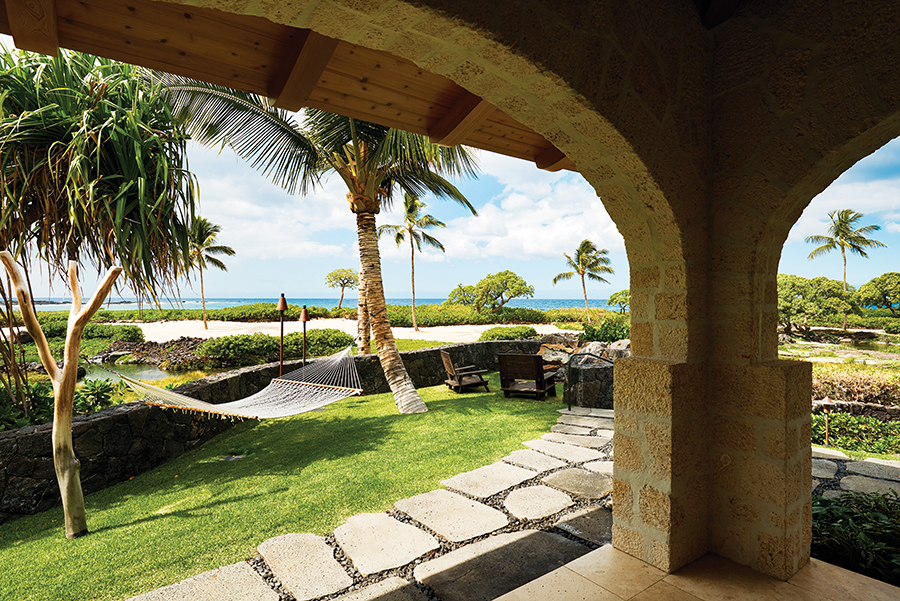

Doors and windows open up for a natural confluence inside and out, especially in the living, dining, and kitchen areas. “It took a while to get an understanding of the lay of the land, and find the peak spot on the property for the main gathering area,” de Reus says.
The architect was already familiar with the property. Years ago, he’d been asked to develop a concept for a home there. He studied the site thoroughly, walking and observing every angle and nuance. The idea was to be able to tell a prospective owner what the possibilities were.
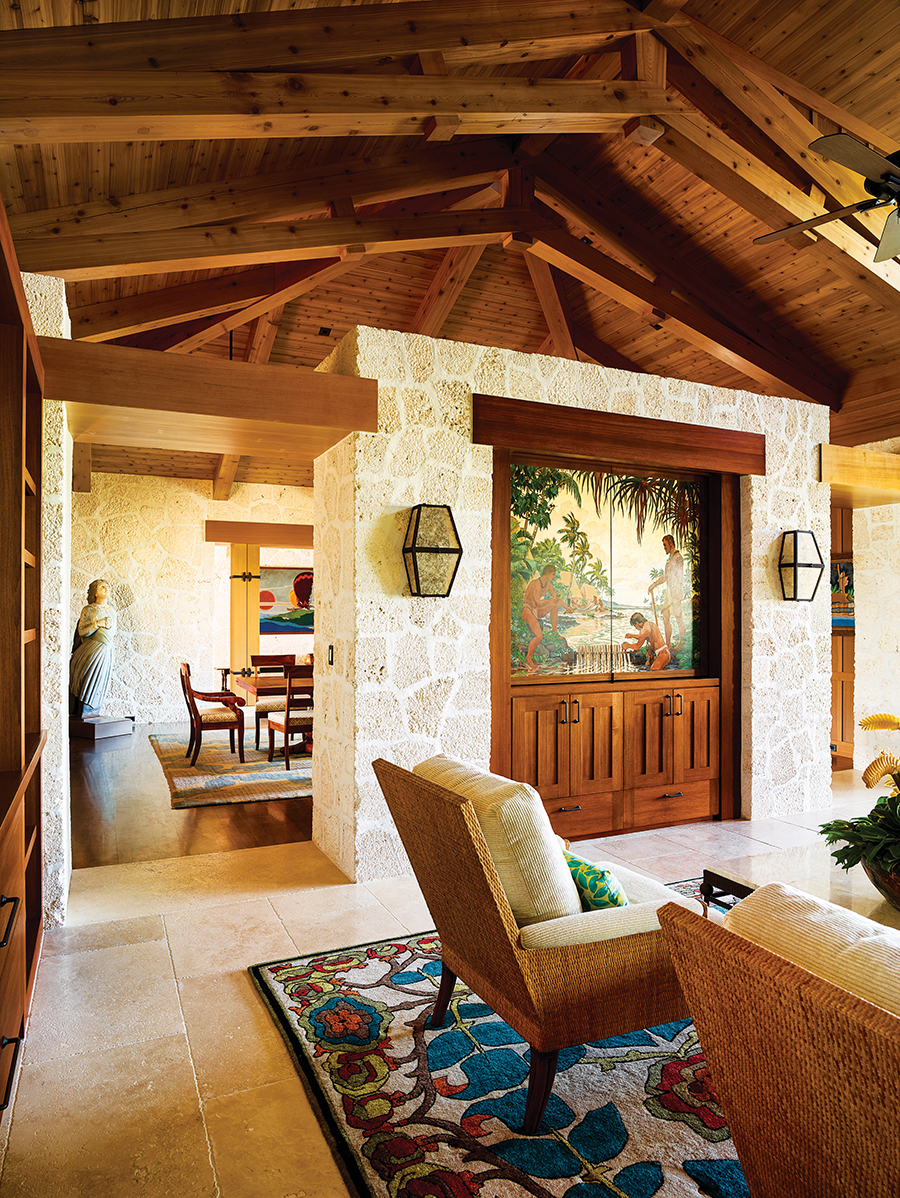

There were plenty, and he wanted to take advantage of each. “I love playing asymmetry off of symmetry,” he says. “It’s one of the more exciting aspects of design for me—to find initial points of magic for that essential sense of order.”
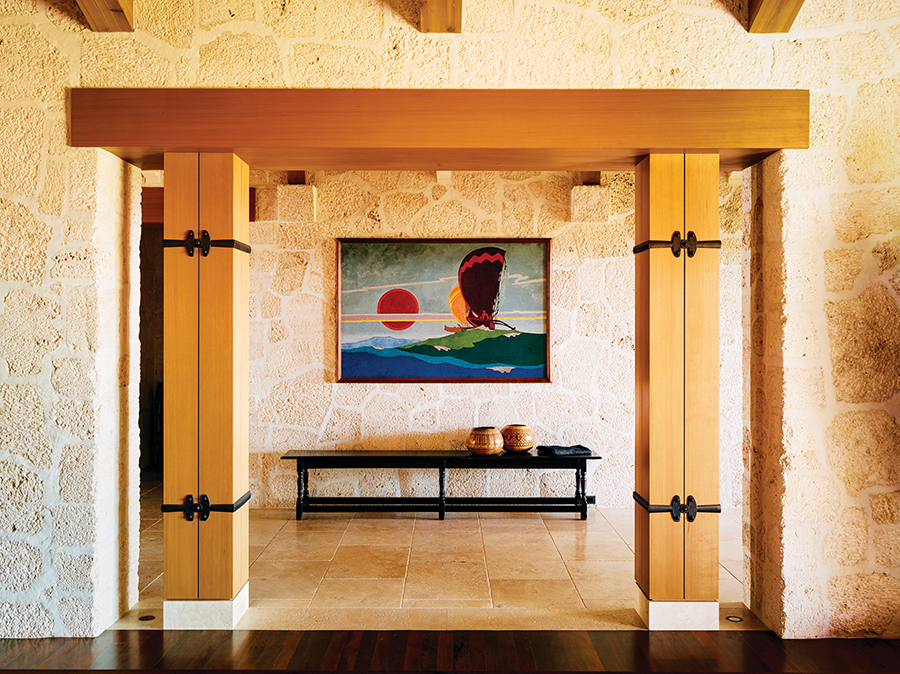

And when his Silicon Valley–based clients asked for a new home at Kukio, one inspired by turn-of-the-20th-century Northern California designs, de Reus not only knew the lay of the land, but also their favorite architects, too. “My heroes are Frank Lloyd Wright, Bernard Maybeck, and Greene and Greene,” he says. He also admires Japanese minimalist Kengo Kuma for his sense of restraint and reverence for the land.
To tap into that kind of respect, de Reus turned to landscape architect David Tamura, who’s been practicing in Hawaii for the past 40 years. Wisely, the two collaborated early in the process. “Mark’s office got me involved at the start with the architecture and the landscape,” Tamura says. “We combined them both for the home design, the owners, the design intent, and the site itself.”
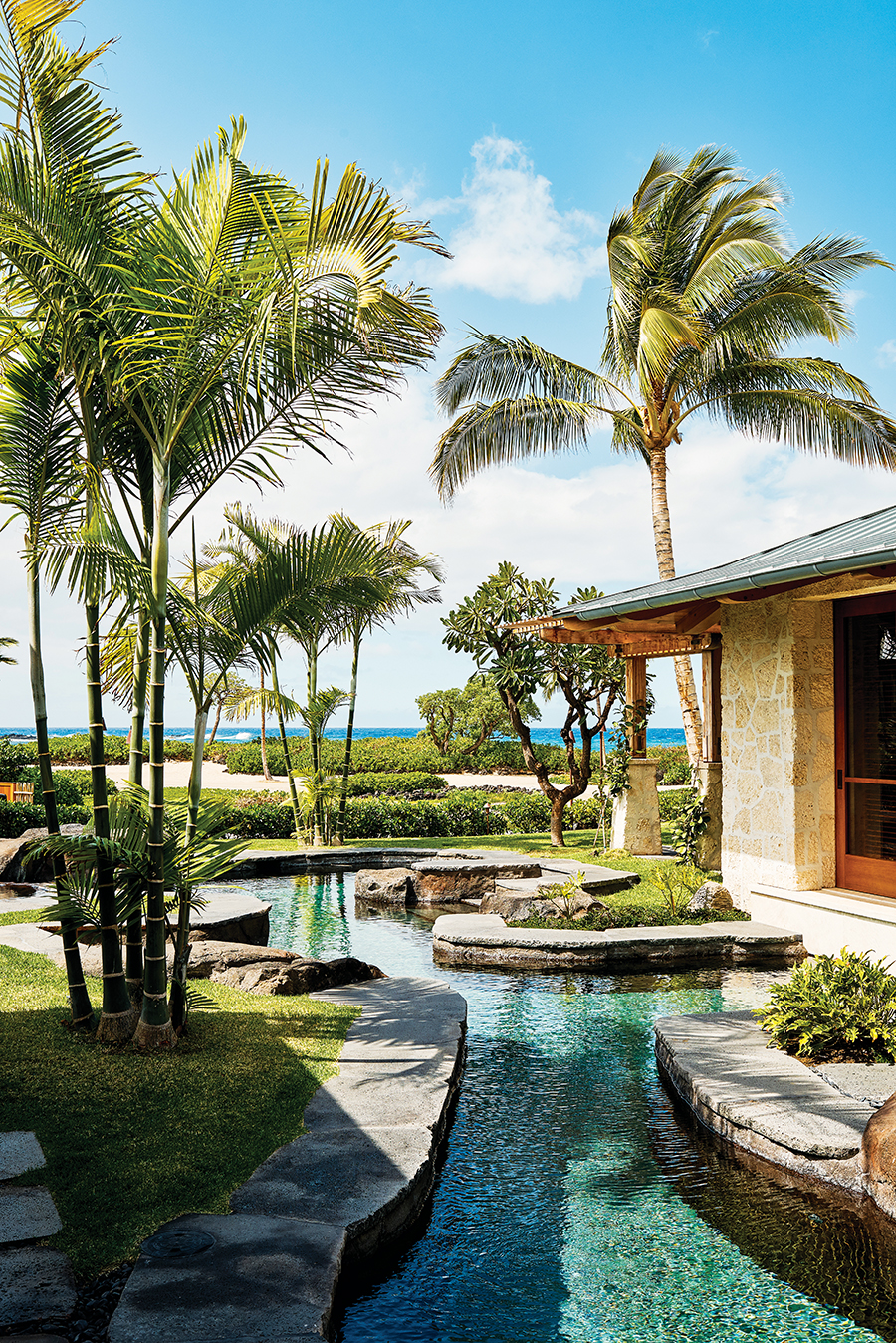

In part, that meant taking advantage of negative outdoor spaces adjoining the home’s forms. “I enjoy those in-between spaces a lot, so the gardens were not a separate issue,” de Reus says. “The solution is always holistic.”
For construction, de Reus looked to Gary Oakes, a veteran structural engineer who’s been on the Big Island since 1973. A year before building started, Oakes was attending design meetings when de Reus was in town, soaking up knowledge and pricing items. “I told him the advantage of me coming was that I’d know his expectations,” Oakes says.
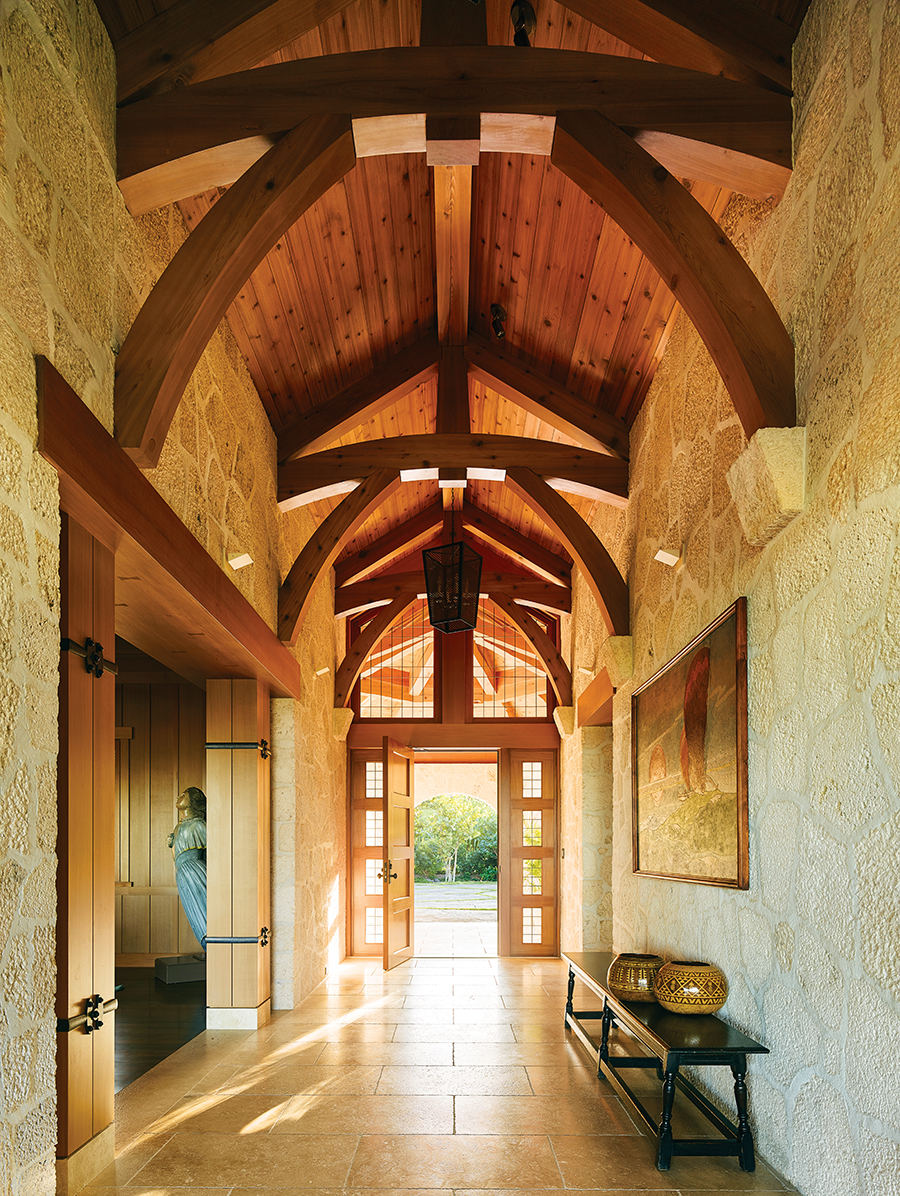

The construction process took about 30 months. The architect chose natural materials, including coral stone from the Philippines for a casual look. The roofs are standing-seam metal. The architect designed them to provide an abundance of shade along the entire western side of the house. “Now they can enjoy views in the afternoon from a nice, shaded lanai [terrace] in front of the living room,” de Reus says.
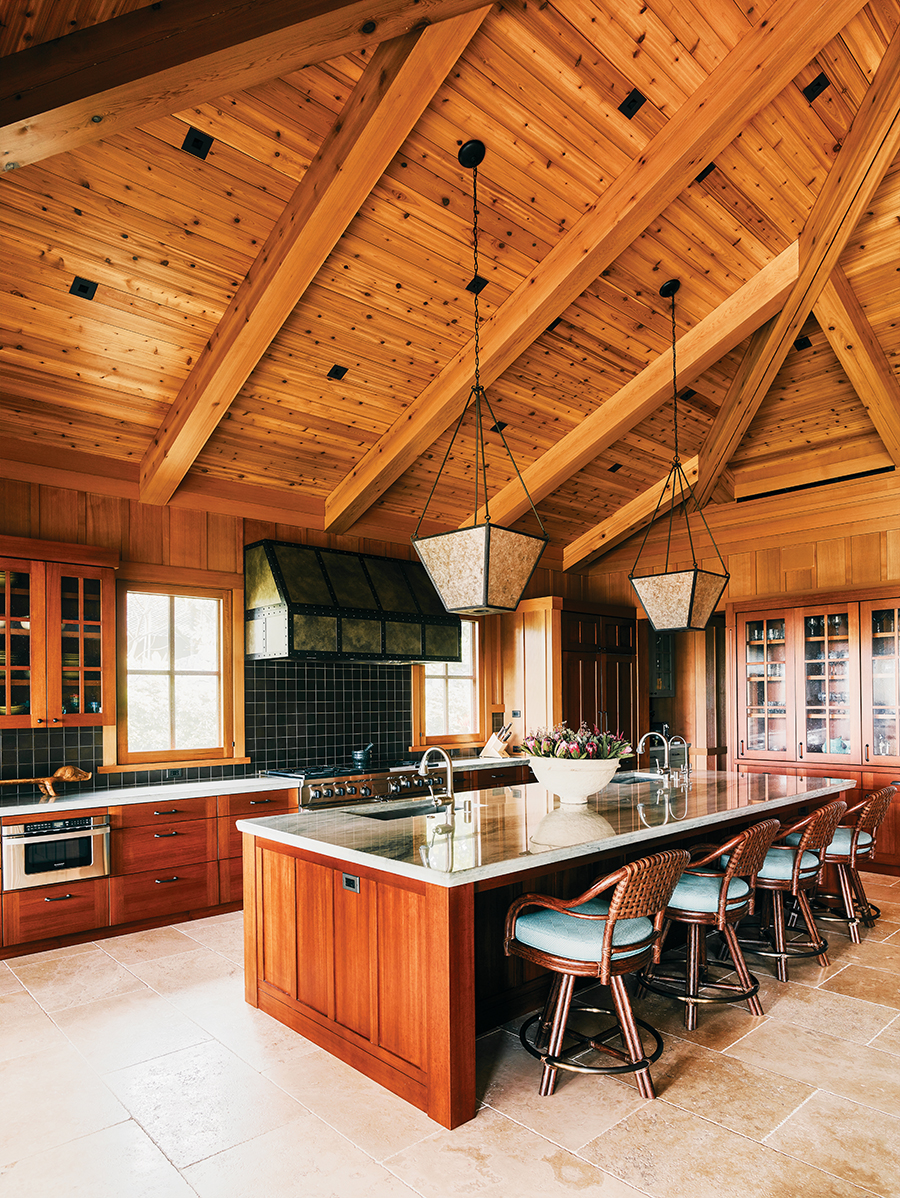

Inside, floors are Ohia wood, native to the Big Island. Teak doors were made in Seattle, while timbers and trim are Western Red Cedar from British Columbia. “The trusses and timber works were fabricated from our designs by Hamill Creek Timberworks in Canada, and put together and taken apart in their shop—and that makes for easy on-site assembly,” he says.
This architect works closely with his craftsmen on site, drawing quickly to show the results he wants. “He’ll come in when we’re working on millwork, and detail it with a freehand sketch—and challenge us in a good way,” Oakes says.
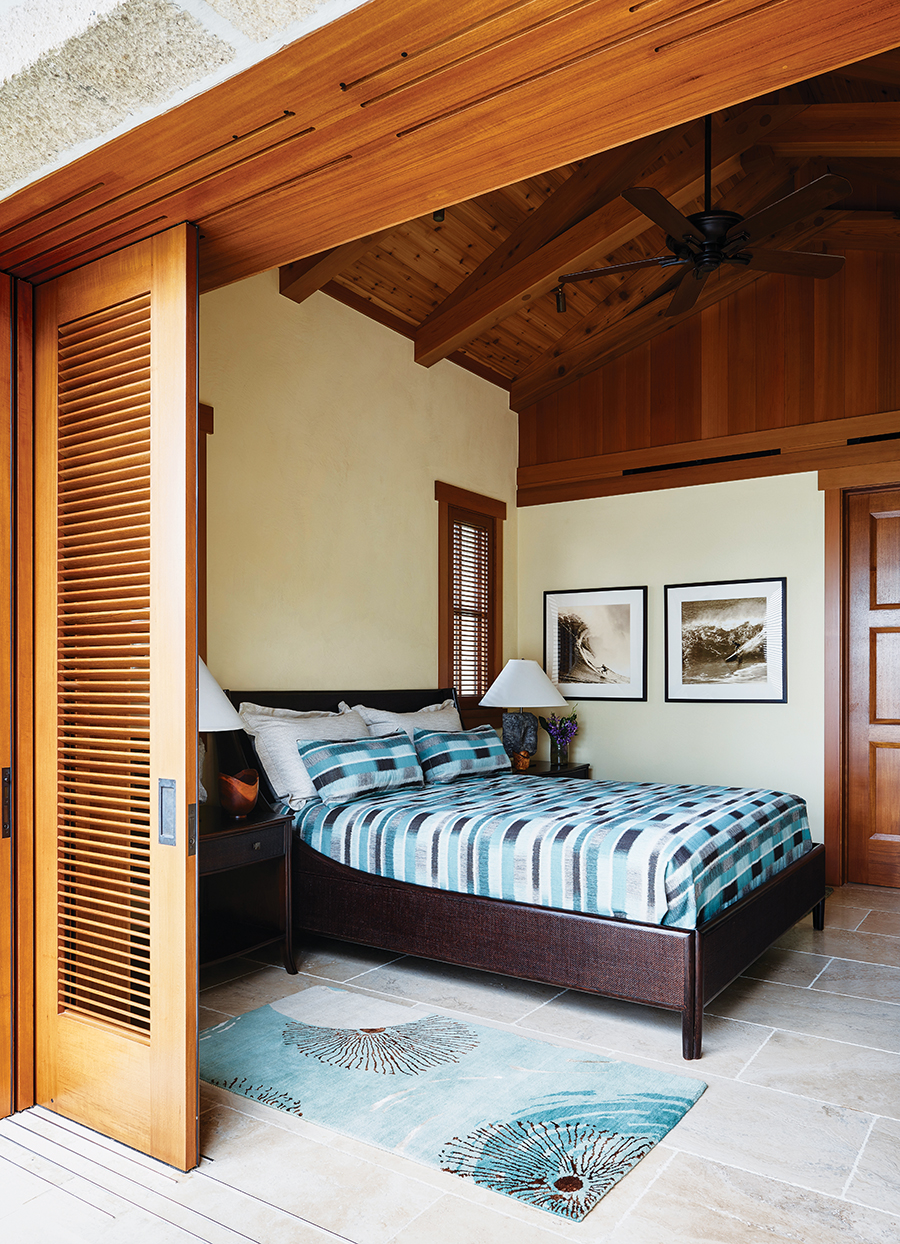

Chances are, Charles and Henry Greene used similar methods with their Pasadena artisans, as they articulated their legendary Arts and Crafts vision from the 1890s through the 1920s.
Today, their techniques—and their ideas—are alive and well in Hawaii.
For more information, visit dereusarchitects.com.
Photographs Joe Fletcher


